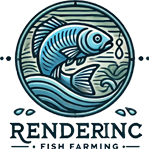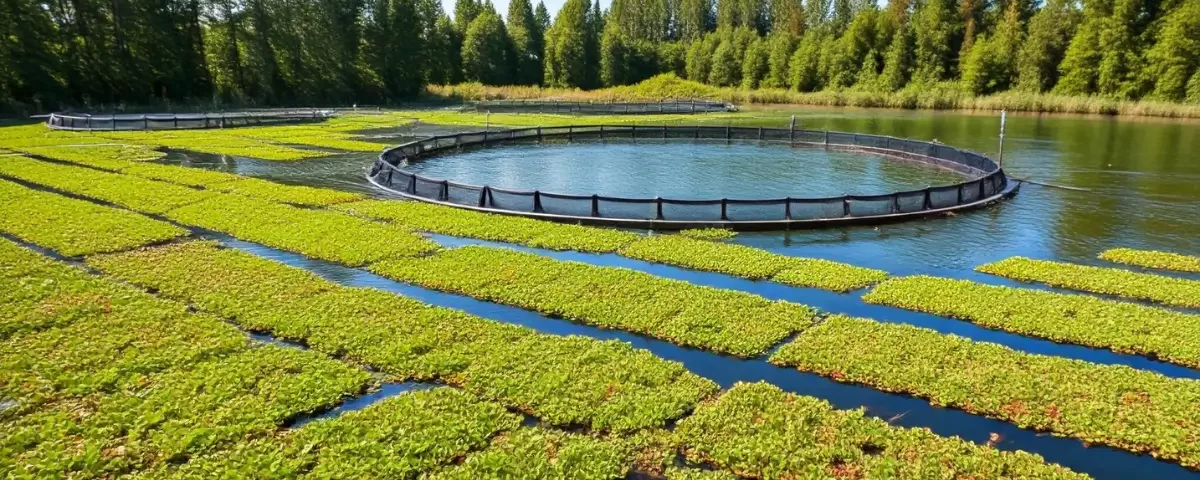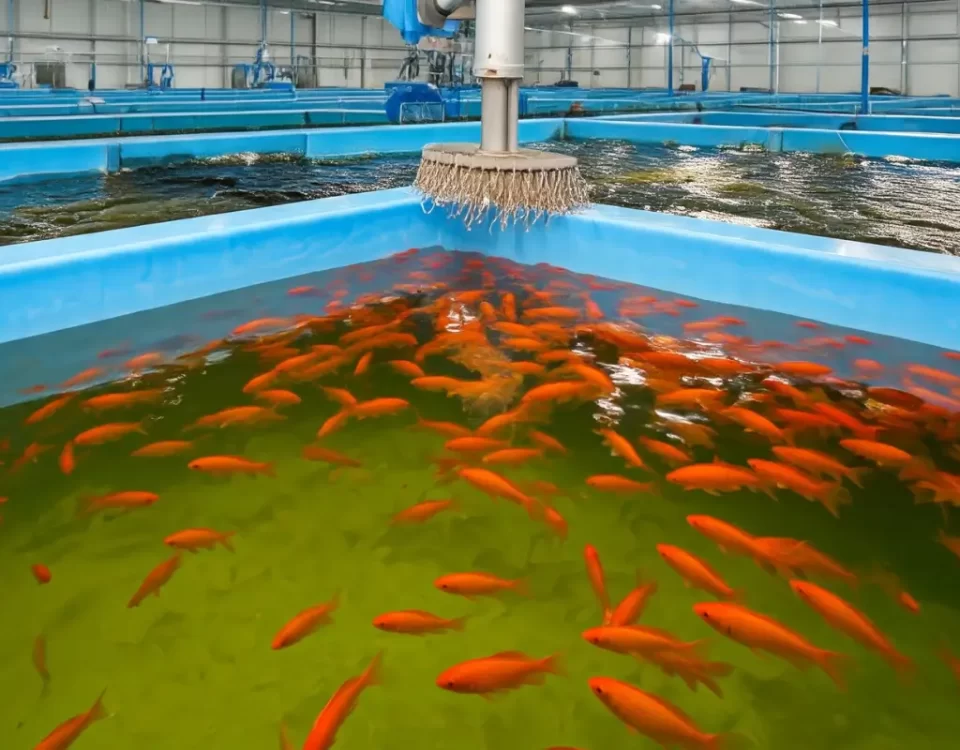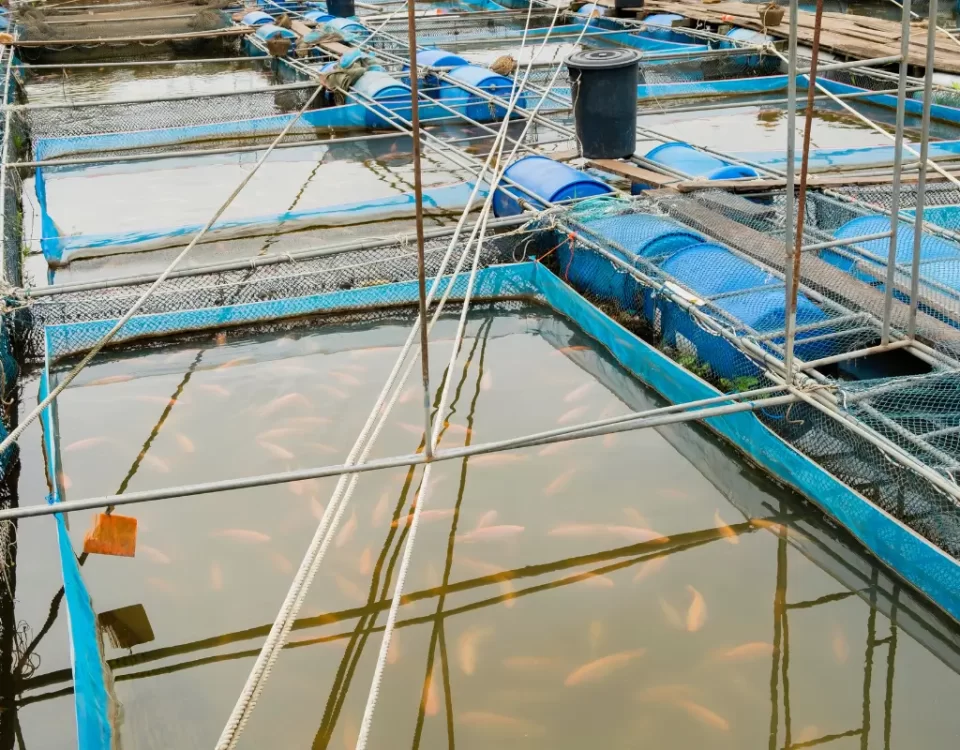The Future of Aquaponics: Integrating Fish Farming with Plant Cultivation

Best Practices for Organic Fish Farming
August 28, 2024
The Economics of Fish Farming: Is it Profitable?
August 28, 2024The Benefits of Aquaponics
Environmental Sustainability
Aquaponics stands at the forefront of environmental sustainability in agriculture. By combining fish farming with plant cultivation, this innovative system creates a symbiotic relationship where waste from fish provides nutrients for plants, and in turn, plants filter and purify the water for the fish. Unlike traditional farming methods, aquaponics does not rely heavily on synthetic fertilizers or pesticides, thereby reducing harmful chemical runoff into the environment. This closed-loop system fosters ecological balance, contributing to healthy ecosystems and preserving water quality.
Efficient Use of Resources
One of the key advantages of aquaponics is its efficient use of resources. In this method, water is recirculated between fish tanks and plant beds, significantly reducing the amount of water needed compared to conventional farming. This water conservation not only helps in mitigating water scarcity but also minimizes the overall environmental impact of agriculture. Additionally, aquaponics requires less space compared to traditional farming, making it a viable option for urban areas and places with limited land availability.
Reducing Waste and Carbon Footprint
Aquaponics plays a crucial role in reducing waste and carbon footprint associated with food production. By utilizing a circular economy approach, where waste from one component becomes a resource for another, aquaponics helps in minimizing organic waste generation. As a result, the system produces less greenhouse gas emissions and contributes positively to combatting climate change. This sustainable practice aligns with the global efforts towards achieving carbon neutrality and emphasizes the importance of environmental stewardship in modern agriculture.
Healthier Produce
In addition to its environmental benefits, aquaponics also yields healthier produce. Since plants in aquaponic systems receive nutrients directly from fish waste, they grow in a nutrient-rich environment, leading to the production of nutrient-dense crops. Furthermore, the absence of synthetic chemicals in aquaponics cultivation results in organic and chemical-free produce, which is not only beneficial for consumers’ health but also contributes to enhanced flavor and nutritional value of the harvest. This focus on quality and purity underscores the potential of aquaponics in promoting sustainable food systems and improving public health.
How Aquaponics Works
Aquaponics, a harmonious and symbiotic system, marries the art of fish farming with the science of plant cultivation. At its core lies the intricate dance between aquatic creatures and lush greenery. The fish play a crucial role in providing the necessary nutrients for the plants to thrive, while the plants, in turn, filter and purify the water for the fish. This mutualistic relationship exemplifies nature’s inherent balance and ingenuity.
In the aquaponics ecosystem, bacteria serve as the unsung heroes, effortlessly transforming fish waste into essential nutrients for the plants. Through a process known as nitrification, ammonia excreted by the fish is first converted into nitrites by one group of bacteria, and subsequently into nitrates by another group. These nitrates act as a nutrient-rich fertilizer for the plants, ensuring their robust growth and vitality. This natural cycle of waste conversion underscores the sustainability and efficiency of aquaponics.
Importance of Bacteria in Converting Waste into Nutrients
The crucial role of bacteria cannot be overstated in an aquaponics system. As the bridge between fish waste and plant nutrition, these microorganisms perform a transformational feat that sustains the entire ecosystem. By breaking down toxic substances into beneficial elements, bacteria enable the seamless flow of nutrients within the closed-loop system. Their presence not only maintains water quality but also fosters a thriving environment where both fish and plants can flourish.
Components of an Aquaponics System
- Fish Tank: The heart of the aquaponics system, the fish tank houses our aquatic companions. Here, fish waste accumulates and serves as the primary nutrient source for the plants. Maintaining optimal water conditions is paramount to ensure the well-being of the aquatic inhabitants.
- Grow Beds: These beds, filled with a growing medium like gravel or clay pebbles, provide a home for the plants. As water from the fish tank is pumped into the grow beds, the plants absorb the nutrients, simultaneously filtering the water for the fish. This dual function showcases the efficiency and elegance of aquaponics design.
- Water Pump: Responsible for circulating water between the fish tank and grow beds, the water pump guarantees a continuous flow of nutrients and oxygen throughout the system. Proper water circulation is essential for nutrient distribution and overall system health.
- Plumbing System: Serving as the intricate network that connects all components, the plumbing system ensures seamless water flow and maintains the balance of the aquaponics system. Thoughtful design and regular maintenance of the plumbing system are essential for the system’s longevity and effectiveness.
Advancements in Aquaponics Technology
Aquaponics technology is experiencing rapid advancements that are transforming the way we approach fish farming and plant cultivation. One of the key areas of progress is in the development of automation and monitoring systems. These sophisticated systems utilize sensors and AI to constantly monitor crucial parameters such as water quality, nutrient levels, and pH balance. By automating tasks like feeding the fish, adjusting water flow, and monitoring plant growth, aquaponics systems can operate more efficiently and with greater precision.
In the quest for sustainability, aquaponics is turning towards the integration of renewable energy sources. Solar panels, wind turbines, and other renewable energy technologies are being incorporated into aquaponics systems to reduce reliance on traditional power sources. By harnessing the power of nature, aquaponics farms can become more self-sufficient and environmentally friendly, further aligning with the principles of sustainable agriculture.
Another fascinating development in aquaponics is the use of vertical farming techniques. By stacking plant beds vertically, aquaponics systems can maximize space utilization and increase overall crop yields. Vertical farming not only saves space but also allows for easier access to plants for harvesting and maintenance. This innovative approach to aquaponics showcases the industry’s commitment to pushing the boundaries of traditional farming practices.
Research and development play a pivotal role in driving continuous improvement in aquaponics efficiency and productivity. Scientists and experts in the field are constantly exploring new methods to enhance nutrient cycling, optimize fish and plant growth rates, and increase overall system resilience. Through ongoing R&D efforts, aquaponics is poised to become a cornerstone of sustainable food production, offering a viable solution to the challenges facing traditional agriculture.
Overcoming Challenges in Aquaponics
Aquaponics, the harmonious integration of fish farming and plant cultivation, presents a promising solution for sustainable agriculture. However, like any system, aquaponics comes with its set of challenges that must be addressed to ensure successful operation and productivity.
Maintaining Proper Water Quality
Water quality is paramount in aquaponics as it directly impacts the health of both the fish and plants. Key parameters such as pH, ammonia levels, temperature, and dissolved oxygen must be carefully monitored and maintained within optimal ranges. To overcome this challenge, aquaponic systems often incorporate filtration systems, biofilters, and regular water testing to ensure a stable and healthy aquatic environment for all organisms involved.
Preventing Diseases in Fish and Plants
Disease prevention is crucial in aquaponics to safeguard the well-being of both the fish and plants. Implementing strict biosecurity measures, such as quarantine protocols for new fish introductions and hygiene practices for plant maintenance, can help minimize the risk of disease outbreaks. Additionally, practitioners may utilize natural remedies like beneficial bacteria and organic pest control methods to maintain a balanced and resilient ecosystem.
Balancing Nutrient Levels
Achieving the optimal nutrient balance is essential for maximizing plant growth and fish health in aquaponic systems. Managing nutrient levels, including nitrogen, phosphorus, and potassium, requires careful attention to feeding schedules, biofilter efficiency, and supplementation procedures. By fine-tuning these factors and maintaining a healthy microbial community, aquaponic growers can ensure that both fish and plants receive the necessary nutrients for robust growth.
Scaling up Production for Commercial Use
Transitioning aquaponics from a small-scale hobby to a commercial operation poses unique challenges related to production efficiency and market demand. To scale up production effectively, aquaponic farmers must consider factors such as system design, automation technology, and crop selection to optimize yields and meet consumer needs. Additionally, establishing good agricultural practices and food safety protocols is crucial for compliance with regulations and maintaining consumer trust as the operation expands.
In conclusion, the future of aquaponics hinges on the ability to address and overcome these key challenges. By prioritizing water quality, disease prevention, nutrient balance, and production scalability, aquaponic practitioners can unlock the full potential of this innovative farming method and pave the way for sustainable agriculture practices in the years to come.
The Future of Aquaponics
Aquaponics, the sustainable system that combines fish farming with plant cultivation, holds tremendous promise for the future of agriculture. As we look ahead, several key trends are emerging that indicate the direction in which aquaponics is heading.
Integration of Aquaponics in Urban Farming
One of the most exciting developments in the future of aquaponics is its integration into urban farming. As urbanization continues to rise, the demand for locally grown, fresh produce is increasing. Aquaponics presents a unique solution to this challenge by allowing food to be grown right in the heart of urban areas. With its space-efficient design and minimal water usage, aquaponics systems can be easily integrated into rooftops, balconies, and even abandoned buildings, transforming urban landscapes into vibrant hubs of sustainable agriculture.
Expansion of Aquaponics in Developing Countries
In developing countries where food insecurity is a pressing issue, the expansion of aquaponics holds great potential. By providing a source of protein through fish farming and a steady supply of nutrient-rich vegetables, aquaponics offers a sustainable solution to combat malnutrition and poverty. As awareness of the benefits of aquaponics grows, we can expect to see a surge in aquaponics projects in developing nations, empowering communities to become self-sufficient in food production.
Collaboration Between Fish Farmers and Horticulturists
A notable trend in the future of aquaponics is the increasing collaboration between fish farmers and horticulturists. Traditionally separate industries, the synergy between aquaculture and hydroponics is becoming more apparent. By sharing knowledge and expertise, fish farmers can enhance the nutrient levels in the water for plant growth, while horticulturists can contribute their skills in optimizing plant health and yield. This cross-pollination of ideas is fostering innovation in aquaponics and driving the development of more efficient and productive systems.
Potential for Aquaponics to Revolutionize Food Production
Looking forward, the potential for aquaponics to revolutionize food production on a global scale is immense. With its ability to produce both protein-rich fish and nutrient-dense vegetables in a closed-loop system, aquaponics offers a sustainable and scalable solution to the challenges facing modern agriculture. By harnessing the power of biomimicry and ecosystem design, aquaponics has the capacity to transform the way we grow food, creating resilient, regenerative farming systems that can feed a growing population while preserving our natural resources for future generations.
Case Studies and Success Stories
Aquaponics has been gaining momentum around the world, with numerous successful farms showcasing the potential of this innovative farming technique. One such example is the Green Life Farms in the United States, which utilizes aquaponics to grow a variety of vegetables and herbs while raising freshwater fish. The closed-loop system not only maximizes space utilization but also reduces water consumption significantly, making it a sustainable and efficient model for modern agriculture.
Successful aquaponics farms around the world
In Australia, Urban Green Farms stands out as a pioneering aquaponics operation that supplies fresh produce to local markets and restaurants. By integrating fish farming with plant cultivation, they have created a self-sustaining ecosystem that minimizes waste and maximizes productivity. Their commitment to organic practices and community engagement has garnered widespread acclaim and inspired other farmers to adopt similar methods.
Moving to Asia, Eco-Aquaponics in Singapore has revolutionized urban farming by combining aquaculture with hydroponics in a vertical farming setup. This innovative approach not only produces high-quality fish and vegetables but also serves as an educational platform for sustainable farming practices. With the increasing demand for locally grown food in urban areas, aquaponics farms like Eco-Aquaponics are paving the way for a more resilient and environmentally friendly food system.
Impact of aquaponics on local communities
The impact of aquaponics extends beyond food production, playing a vital role in empowering local communities and promoting food security. In rural communities in developing countries, small-scale aquaponics systems have provided families with a sustainable source of nutritious food and an additional income stream. By training farmers in aquaponics techniques, organizations like Aquaponics for All have helped alleviate poverty and improve livelihoods in regions facing food insecurity.
In urban settings, aquaponics has revitalized unused spaces and transformed them into vibrant hubs of agricultural innovation. Projects like City Roots Community Farm in the UK have brought together urban dwellers to participate in growing food sustainably and developing a deeper connection to the origins of their food. By fostering a sense of community ownership and environmental stewardship, aquaponics has the potential to create lasting social impact and promote a more resilient food system.
Lessons learned and best practices for aspiring aquaponics enthusiasts
For aspiring aquaponics enthusiasts looking to embark on their own farming journey, several key lessons and best practices can guide them towards success. Proper system design and water quality management are crucial aspects to consider, as maintaining a balanced ecosystem is essential for the health of both fish and plants. Investing in high-quality equipment and regular monitoring can prevent potential issues and ensure long-term sustainability.
Moreover, continuous learning and adaptability are essential virtues for aquaponics practitioners, as each system may have unique challenges that require creative solutions. Networking with experienced farmers, attending workshops, and staying updated on the latest research can provide valuable insights and keep enthusiasts informed about industry trends. By applying a combination of knowledge, passion, and perseverance, aspiring aquaponics enthusiasts can contribute to the growth of this exciting field and make a positive impact on food production and sustainability.
Aquaponics stands at the forefront of sustainable agricultural practices, offering a harmonious symbiosis between fish farming and plant cultivation. Through this innovative system, aquaponics not only provides a means of producing both protein-rich fish and nutrient-dense crops but also promotes eco-friendly resource utilization.
A recap of the benefits reveals the efficiency of aquaponics in maximizing space and resources, yielding a higher output compared to traditional farming methods. The closed-loop system minimizes water wastage, making it a viable solution in regions prone to water scarcity. Furthermore, aquaponics reduces the need for synthetic fertilizers and pesticides, thus contributing to healthier food production.
In light of the vast potential that aquaponics holds, there is an urgent need for further research and implementation. By delving deeper into the intricate dynamics of aquaponic systems, researchers can optimize efficiency and productivity, paving the way for broader adoption on a commercial scale. Encouragement for stakeholders to invest in research and development will lead to technological advancements that enhance the sustainability and profitability of aquaponics.
As we gaze into the future of integrating fish farming with plant cultivation, a vision of synergistic agricultural landscapes emerges. Imagine aquaponic setups seamlessly integrated into urban environments, providing fresh produce and fish to local communities. Through education and promotion, the widespread adoption of aquaponics has the potential to transform the way we perceive food production, forging a path towards a more sustainable and resilient food system.

Michael Rivers is an experienced aquaculture enthusiast with over a decade of hands-on knowledge in fish farming and sustainable aquatic systems. Passionate about promoting eco-friendly practices, he shares his expertise on fish breeding, water management, and the latest advancements in aquaculture technology. Through his blog, Michael aims to help both beginners and seasoned fish farmers achieve success in their ventures while contributing to the growth of sustainable food production.




